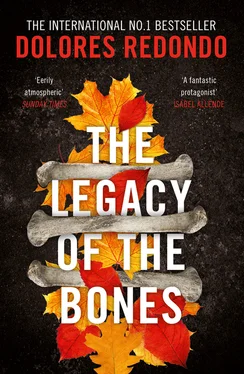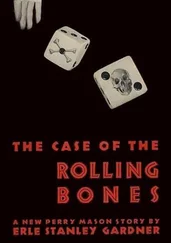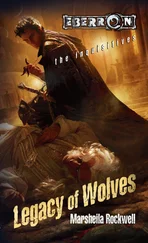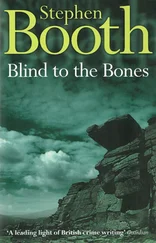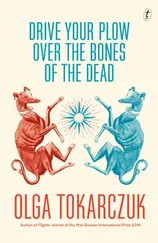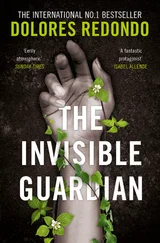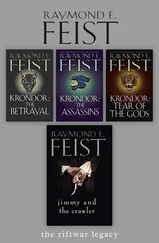Iriarte hurried across to them.
‘Thank you for coming, Inspector Salazar; hello, Jonan,’ he said. ‘It seems that several desecrations have taken place in the chapel in the past few weeks. First of all, someone broke into the church in the middle of the night and smashed up the baptismal font. A week later they took an axe to one of the front pews. And now this,’ he said, pointing towards the altar, which showed signs of an arson attempt. ‘Someone set fire to the altar cloths, only luckily they’re made of linen and burn slowly. Since all this started, the chaplain, who lives nearby, has been keeping an eye on the church. He noticed a light inside and called the emergency services. By the time the patrol cars arrived the fire had gone out, and the culprit or culprits had scarpered.’
Amaia looked at him expectantly. She pursed her lips, puzzled.
‘Right, so, an act of vandalism, desecration or whatever you want to call it – I don’t see how we can help.’
Iriarte raised his eyebrows theatrically.
‘Come and see for yourselves.’
They approached the altar, where the inspector crouched down and lifted a sheet to reveal what looked like a stem of dry, yellow bamboo cane, charred at one end where it had been set alight.
Bewildered, Amaia glanced at San Martín, who leant over to inspect it more closely.
‘Good Lord!’ he said with surprise.
‘What is it?’ asked Amaia.
‘A mairu-beso ,’ he whispered.
‘A what?’
San Martín drew back the sheet, revealing another piece of broken cane and the tiny bones of a hand.
‘Good God, it’s a child’s arm,’ said Amaia.
‘A child’s arm bones, to be precise,’ San Martín corrected her. ‘Probably less than a year old; the bones are tiny.’
‘I’ll be …’
‘A mairu , Inspector Salazar, a mairu-beso is a baby’s arm bone.’
Amaia looked at Jonan, seeking confirmation of what the doctor had said. She saw that his face had turned visibly white as he contemplated the charred little bones.
‘Etxaide?’
‘Yes,’ he said in a hushed voice, ‘it’s a mairu-beso . For it to be genuine, it has to come from a child that died before being baptised. In the olden days, it was believed they had magical powers that protected people when used as torches; the smoke they gave off could put to sleep the inhabitants of a house or an entire village, while the bearers carried out their “sorcery”.’
‘So, what we have here is not only the desecration of a church but of a grave as well,’ declared Iriarte.
‘In the best-case scenario,’ whispered Jonan Etxaide.
It didn’t escape Amaia, the way Iriarte drew Jonan aside, their uneasy conversation coupled with furtive glances towards the altar. In the meantime she went on listening to Deputy Inspector Zabalza’s observations:
‘As with suicides, desecrations carried out on human remains aren’t usually made public, due to their social consequences and because of the possible copycat effect, but they occur more often than is reported in the media. Since the arrival of immigrants from Haiti, the Dominican Republic and Cuba, as well as parts of Africa, religious practices that originated in those countries have gained acceptance among Europeans. Santería , for example, has become more popular in recent years; in some of its rituals, human bones are used to summon the spirits of the dead – as a result, desecrations of tombs and niches have increased significantly. A year ago, during a routine drugs search, a car was intercepted on its way to Paris containing fifteen human skulls stolen from various cemeteries along the Costa del Sol. Apparently, they fetch a good price on the black market.’
‘So, these bones could have come from anywhere,’ ventured San Martín.
‘No, not from anywhere,’ Jonan said, rejoining the group. ‘I’m convinced they were stolen here in Arizkun, or in one of the surrounding villages. It’s true that human bones are used in many religious rituals, but mairu-beso are limited to the Spanish and French Basque Country, and Navarre. As soon as Dr San Martín has dated the bones, we’ll know where to look.’
He turned round and walked towards the far end of the nave, while Amaia gazed after him bemused. She had known Jonan Etxaide for three years, and in the last two her respect and admiration for him had grown in leaps and bounds. Jonan had joined the police force after finishing his studies – he held a twin degree in anthropology and archaeology – and although he wasn’t a typical cop, Amaia appreciated his somewhat romantic viewpoint and his discreet, non-confrontational approach. She was all the more surprised, therefore, by his somewhat stubborn insistence about where to steer the case. Concealing her unease, she said goodbye to the pathologist, still puzzling over the way Iriarte had nodded while Jonan spoke, the two of them casting anxious glances at the walls of the chapel.
She could hear Ibai as soon as she turned the key in the lock. Leaning back against the door to close it, she hurried upstairs, slipping off her coat. Guided by his urgent cries, she burst into the bedroom to find her son screaming his lungs out in his cot. She glanced around, a knot of anger clenching her stomach.
‘James,’ she yelled, as she lifted the baby out of the cot. He walked in carrying a feeding bottle.
‘How could you leave him to cry like that? He was desperate. What on earth were you doing?’
James stopped in his tracks, holding up the bottle.
‘He’s fine, Amaia. He’s crying because he’s hungry, which is what I was trying to deal with. It’s time for his feed, you know how punctual he is. I waited a few minutes, but when you didn’t arrive, he started getting louder …’
Amaia bit her tongue. She knew James’ words weren’t meant as a reproach, but they felt like a slap in the face. She turned away, sat down on the rocking chair and lifted the baby to her.
‘Throw that muck away,’ she ordered.
She heard him sigh good-naturedly as he walked out.
Grilles, railings, and French windows: the flat, three-storey façade of the Archbishop’s palace, whose weather-worn oak door gave on to Plaza Santa María. Inside, a priest dressed in a smart suit and clerical collar introduced himself as the Archbishop’s secretary, then led them up a wide staircase to the first floor. After ushering them into a room, he asked them to wait while he announced their arrival, then disappeared noiselessly behind a hanging tapestry. Within seconds he was back.
‘This way, please.’
The Archbishop received them in a magnificent room, which Jonan estimated must have spanned the entire length of the first floor. Four windows, which opened on to balconies with close-set railings, were closed against the bitter morning cold of Pamplona. The Archbishop greeted them standing beside his desk, proffering a firm handshake as the police commissioner made the introductions.
‘Monsignor Landero, this is Inspector Salazar who heads the murder squad at the Navarre regional police, and Deputy Inspector Etxaide. I believe you’ve already met Father Lokin, the parish priest at Arizkun.’
Amaia noticed a middle-aged man standing gazing out of the nearest balcony window. He wore a dark suit that made the secretary’s look shoddy in comparison.
‘Allow me to introduce Father Sarasola. He is attending this meeting in an advisory capacity.’
Sarasola walked over, shook hands with them while staring straight at Amaia.
‘I’ve heard a great deal about you, Inspector.’
Amaia didn’t reply, but bobbed her head by way of greeting, before taking a seat. Sarasola returned to the window where he stood with his back to the room.
Читать дальше
